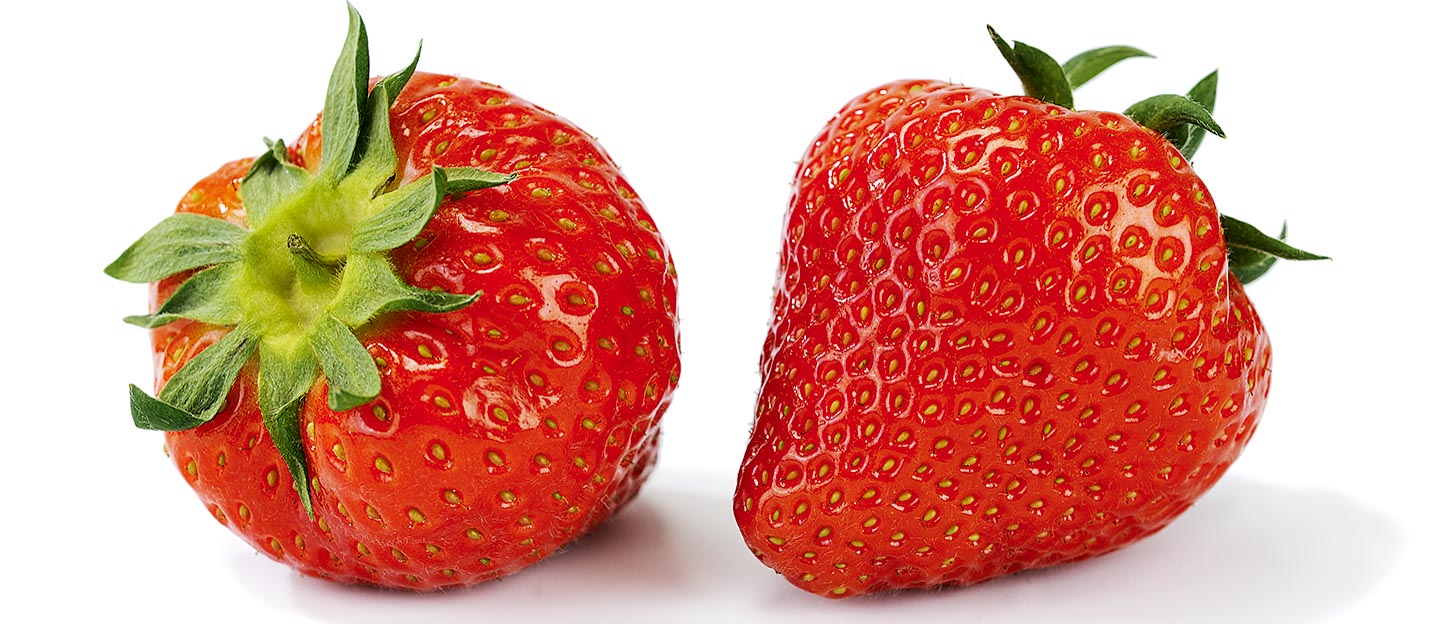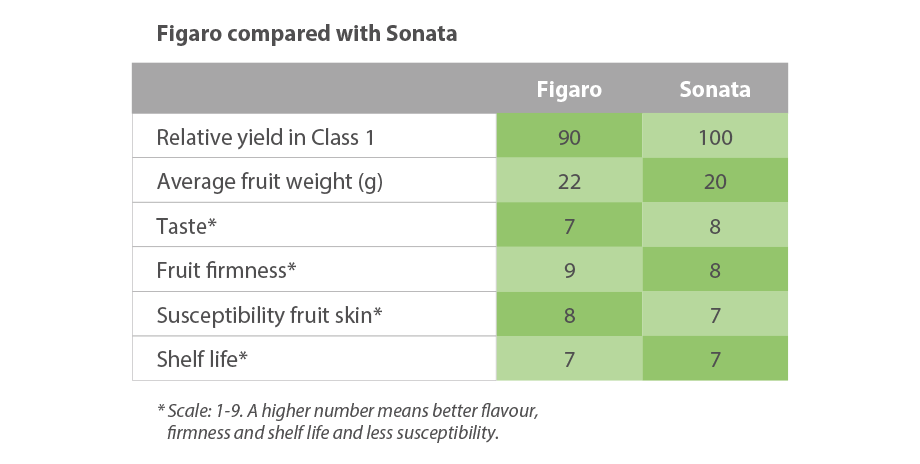Figaro


Blossoming and harvest period
Figaro develops a robust and sturdy plant with long, slightly hairy leaf stalks. The big leaves have a distinctive light green colour. Figaro blooms at almost the same time as Sonata. The quality of the flowers is good. The flowers, which are big like the fruit, produce sufficient pollen. The flower clusters are long and sturdy and clearly more sturdy than those of Sonata. There are fewer flowers per cluster. Because the clusters partly come out above the leaves, the flowers are a bit sensitive to night frost. The harvest is almost simultaneous to that of Sonata.
Fruit quality
Figaro produces large, slightly chunky and rounded conical fruits. They are rather glossy and orange-red in colour. The first fruits can develop into a very big, slightly grooved product. The subsequent fruits are usually beautifully shaped and fairly thick. At the end of the season, the fruits are round and have an upright calyx. The average fruit weight is fairly large in comparison with other midseason varieties. Small strawberries at the end of the harvest are rare. The firmness of the fruit is significantly better than that of Sonata. The fruit usually has quite a good flavour, especially in very sunny periods. If it rains, sometimes a white neck forms.

Productivity
Figaro is usually somewhat less productive than Sonata, but there are exceptions. Indeed, in some years, many clusters form. Then Figaro can be at least as productive and yield a splendid harvest with beautiful large fruit. Figaro makes relatively few small fruits, making its class I share high. Because of the large fruit size and the fact that the fruits are easy to find, the picking performance is generally fairly good. Thanks to the firmness of the strawberries and their strong skin, brushing is never a problem. The strawberries are also very easy to sort.
Susceptibility to disease
Figaro develops a robust and sturdy crop that is minimally sensitive to powdery mildew (Sphaerotheca macularis) and moderately susceptible to crown rot (Phytophthora cactorum). Figaro is, however, susceptible to wilt (Verticillium dahliae) and fruit rot (Botrytis cinerea). Figaro also seems susceptible to the bacterial disease Xanthomonas fragariae. It is also susceptible to fruit rot under the sepals. This occurs especially in wet weather conditions. Therefore, preventive spraying against fruit rot during flowering is very important.
Growing experience
Figaro produces a large crop and is particularly suitable for cultivation in summer conditions. The light orange-red, firm fruits allow a somewhat broader harvest frequency. Thus the fruits grow even more exuberantly. This results in improved fruit size and higher production. The first fruits are sometimes on a fairly thick stem and are therefore somewhat difficult to pick. The foliage of the plants offers the fruit good protection against sun damage. Figaro is also a suitable variety for use in frigo cultures. High production is realized in the second harvest year.
Available as:




